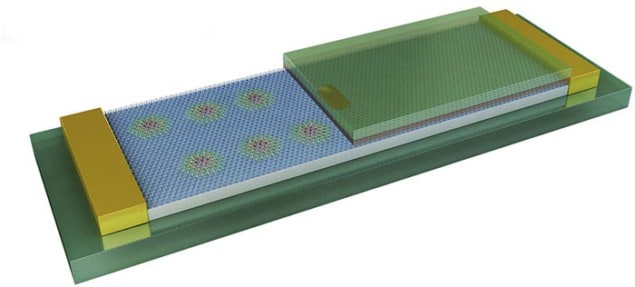
Simulations suggest that magnetic skyrmions could form the basis of ultra-low-power-consumption devices that mimic the memory and learning functions of neural synapses.
Despite advances in computer power, there are still tasks that are best done by biological brains. Efforts to emulate the way the brain is wired have led to work on “artificial synapses” as connections for use in “neuromorphic” computers that try to emulate the functionality of a biological brain. Researchers in China have now demonstrated that the skyrmion – a type of magnetic quasiparticle – could be used to create energy-efficient synaptic devices.
New challenges are not always best met with old tools, and as challenges go, emulating synaptic connections in a scalable system – the human brain contains hundreds of trillions of synapses – is no mean feat. Synapses do more than connect neurons, they weigh how well neurons are connected through signal spiking and modulation processes that are thought to be the basis of human learning and cognition. While some progress in the development of synaptic devices has been made using phase-change memories, Ag-Si memories and resistive memories, studies of magnetic skyrmions suggest they may be a promising alternative.
Collective excitations
Skyrmions are particle-like regions within a field where all of the field vectors point either towards or away from a single point in space. They were originally proposed in the 1950s by British physicist Tony Skyrme to explain aspects of particle physics. Researchers have since discovered that some collective excitations of electron spins in solids behave much like skyrmions, and the first observation of a magnetic skyrmion lattice was reported in 2009. These solid-state skyrmions could be potentially useful in next-generation electronics and spintronics.
“My supervisor Weisheng Zhao told me to investigate applications of skyrmions,” says Yangqi Huang, a researcher at Beihang University in China. He came upon the idea of using skyrmions in synaptic devices through discussions with members of his research group, which includes spintronics theorists – people who design devices and specialists in fabrication and circuit design – as well as people working in neuromorphic computing. “A skyrmion is a particle-like structure, so I thought it’s very similar to a neurotransmitter.”
Huang and his colleagues at Beihang University and the Chinese University of Hong Kong, Shenzhen, simulated their skyrmions as 2D discs 50–60 nm in diameter. The circumferential edge and centre of the discs are opposite magnetic poles separated by a chiral domain wall. The skyrmions are incorporated within a device comprising a ferromagnetic layer that has perpendicular magnetic anisotropy, modelled as cobalt, and a heavy-metal layer modelled as platinum. Together, the two components comprise a “racetrack” that magnetic skyrmions can move along.
Energy barrier
Skyrmion racetracks have been studied before as possible electronic memory components. However, by adding an energy barrier at the centre of the racetrack, the researchers simulated the presynaptic and postsynaptic regions where neurons connect to a synapse. Current flow through the heavy-metal layer from one end of the device to the other injects a vertical spin current into the ferromagnetic layer, which drives skyrmions between the pre and post-synaptic regions.
In a biological synapse, prior signal activity causes changes in the number of neurotransmitter receptors, leading to “depression” or “potentiation” – which is the weakening or strengthening of the synaptic connection. In the proposed skyrmion synaptic device, the change in magnetoresistive properties that occurs as skyrmions move either side of the energy barrier mimics this depression and potentiation. Huang and colleagues showed that their system has both short-term plasticity and long-term potentiation. These are synapse-like behaviours that are linked to long- and short-term memory.
The simulations suggest that the skyrmion synaptic devices operate with very low energy dissipation, explains Huang. In addition, the electrical current density needed to drive the skyrmions is very low, as has already been shown for skyrmions in previous theoretical and experimental studies. The result is a power consumption of just 1 pJ per synaptic event, making it a contender for making practical synaptic devices.
“Only a simulation”
“But it is only a simulation,” adds Huang, emphasising that most other synaptic devices have already been built and demonstrated. While the racetrack can be readily fabricated from metals with a capping layer to produce the energy barrier, an effective way of detecting skyrmions based on electrical signals is still a challenge. So far, other groups have used the Kerr effect – an optical phenomenon – to observe skyrmions. Huang has also begun experimental work on skyrmions in germanium thin films using Lorentz transmission electron microscopy, but this is limited to very thin films and work in this area is ongoing.
“Skyrmions have unusual topological properties,” says James Gimzewski, director of the UCLA CNSI Nano & Pico Characterization Core Facility, who was not involved with the current research. As one of the pioneers in artificial synapses based on nanostructures he adds: “It is interesting to see that they can now be used to mimic synaptic excitation and depression opening a new avenue for neuromorphic devices.”
The research is described in Nanotechnology.
- A version of this article first appeared on nanotechweb.org



